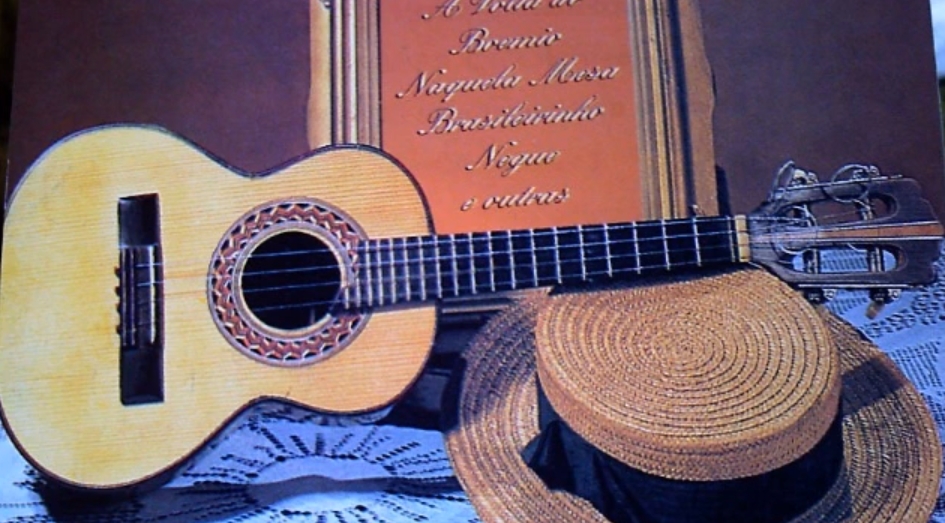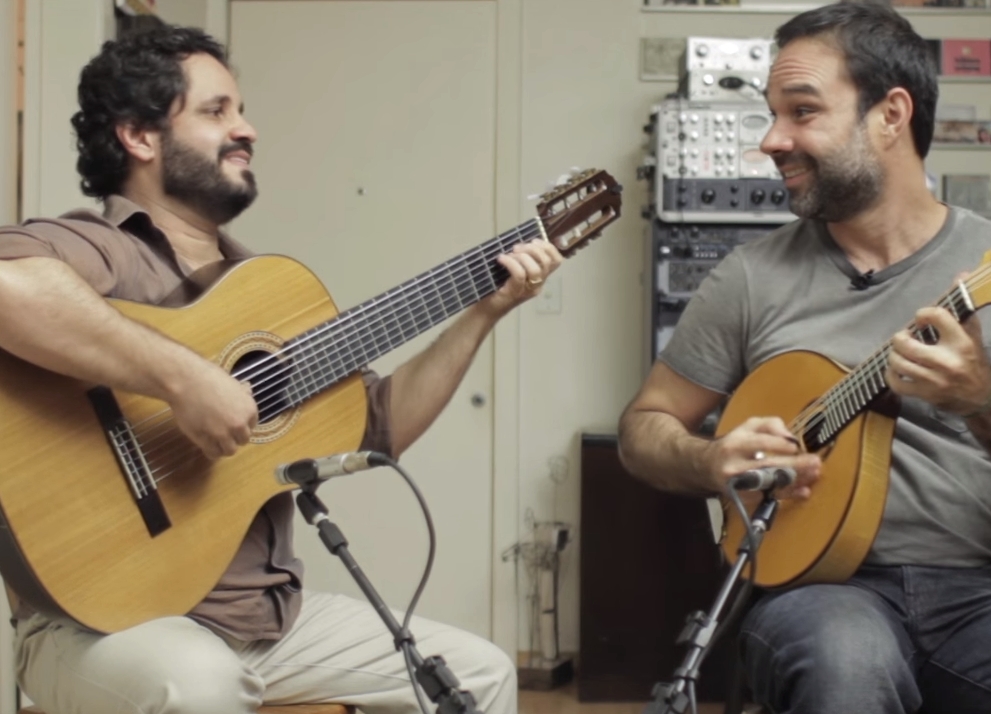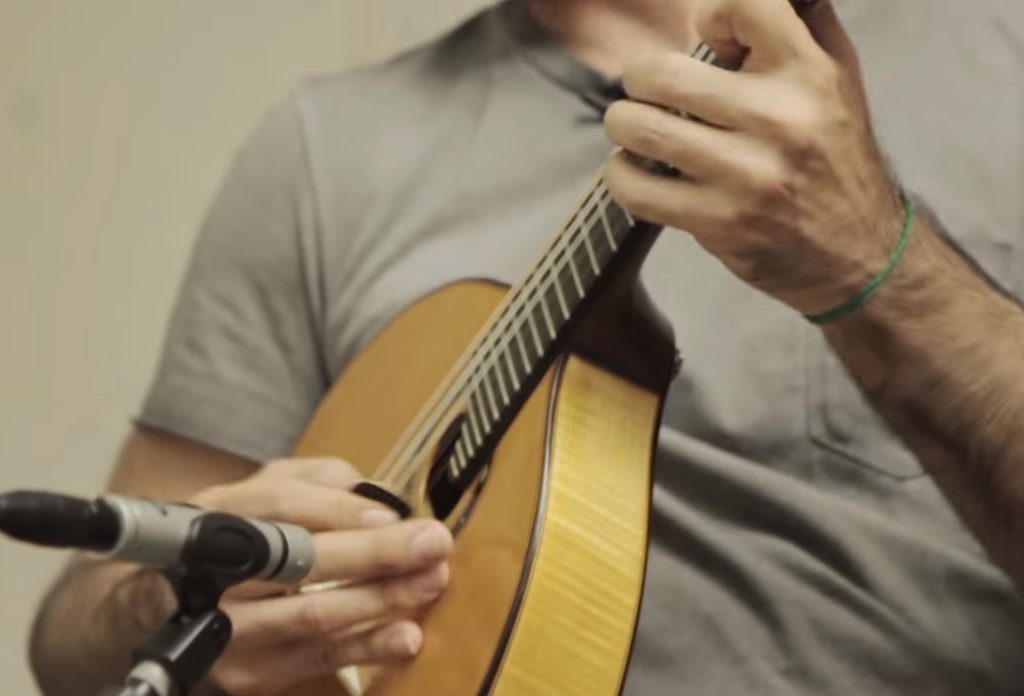Revendo o Passado is a great choro waltz by Freire Júnior. You can find more information about Freire Júnior at the end of this post.
I have found many interesting versions of this choro, played by guitar, bandolim, cavaquinho, clarinet as well as sung versions. I have even found a version played by a trombone.
This choro is not very difficult to play is you play it in a straight rhythm, you can however apply the typical rhythmical variations for choro music and play it very free which can make it much more difficult to play.
The longer notes of this melody sound very well if you play those on the mandolin with a tremolo. This is an example of Revendo o Passado played by bandolim and Brazilian guitar (violão).
Revendo o Passado (Freire Junior)
Elias Barboza no bandolim e Mathias Pinto no violão, na Oficina de Choro do Santander Cultural de Porto Alegre, dia 11 de junho, interpretando a valsa de Freire Junior, Revendo o Passado.
Another great version with mandolin / bandolim is the version played by Joel Nascimento at the beginning of my grooveshark playlist.
Playlist Revendo o Passado
The first video of my youtube playlist is a version with clarinet and piano, the clarinet is played by Wilfried Berk who grew up in Brazil and lives in Germany now. Wilfried Berk has made a great CD with choro music for clarinet and piano / guitar.
Additional Information
A historic recording by Augusto Calheiros (1933) can be found here: http://cifrantiga2.blogspot.com/2010/09/revendo-o-passado.html
Sheet music for Revendo o Passado – melody, chords, bass line – is available in the Songbook Choro.
Simple sheet music for the melody: http://www.epocadeouro.com.br/partituras.php?id=30
Biography of Freire Júnior (Port.): http://musicachiado.webs.com/Biografias/BiografiaFreireJunior.htm
Biography of Freire Júnior (Engl.): http://www.allmusic.com/artist/freire-jnior-p468531/biography
There you can find the following information:
Composer of the first modinha to open the genre to systematic recording, “Luar de Paquetá” (recorded by Baiano), Freire Júnior also wrote and enacted 172 musical plays, including operettas, burlettas, and others, possibly becoming the biggest author of Brazilian musical revues. He wrote more than 125 songs, among them the tango-fado “À Beira-Mar” (lyrics by Hermes Fontes, 1922), the samba carnavalesco “Ai, Cabocla Bonita” (1922), “Ai, Seu Mé” (with Careca, success of the Carnival of 1922), and many others. His songs were recorded by some of the great singers of his time, like Vicente Celestino, Francisco Alves, and Baiano.
Wikipedia about the modinha: http://en.wikipedia.org/wiki/Modinha
A modinha is a type of sentimental love song. The modinha is of uncertain origin, but it may have evolved in either Brazil or Portugal. Around the end of 18th Century[citation needed], Domingos Caldas Barbosa wrote a series of modinhas that were extremely popular, especially in salons, and so can be termed salon music. The modinha of the late 19th century was sung in the streets or as an outdoor serenade, usually accompanied by flute, guitar, and cavaquinho.The earliest known literary reference to “Brazilian modinha“, most likely in reference to Barbosa’s music, was made by Portuguese satirical poet Nicolau Tolentino de Almeida in 1779. One of his characters in a farce from 1786—A rabugem das velhas [The old women’s rage]— also mentions “this new modinha that’s been invented now”, which sends her grandmother into a rage, eulogizing the past.[1]
Homepage Wilfried Berk: http://www.wilfriedberk-clarinet.de/
More posts about choro: http://www.mandoisland.com/?tag=choro



